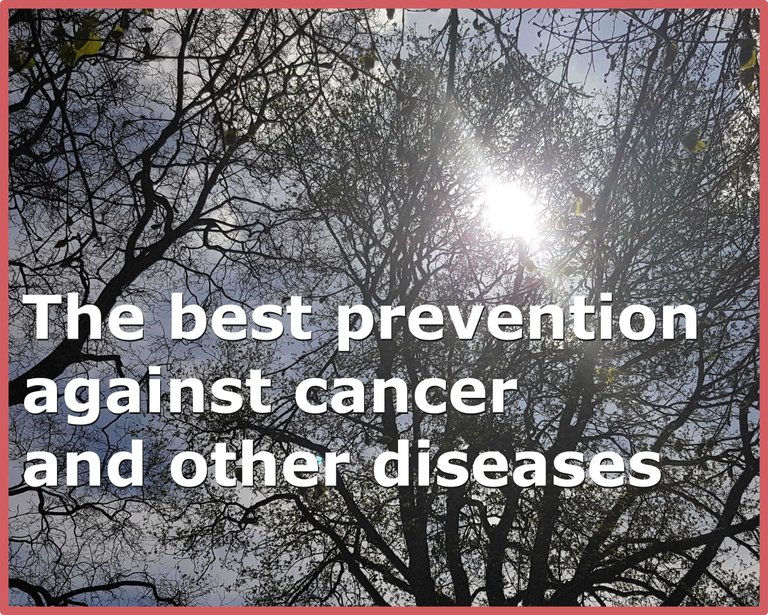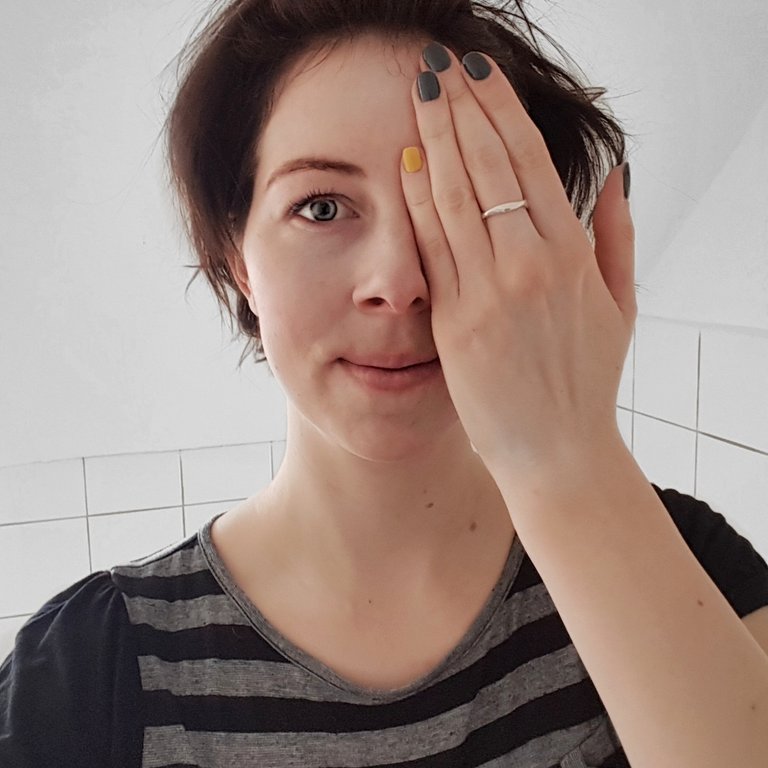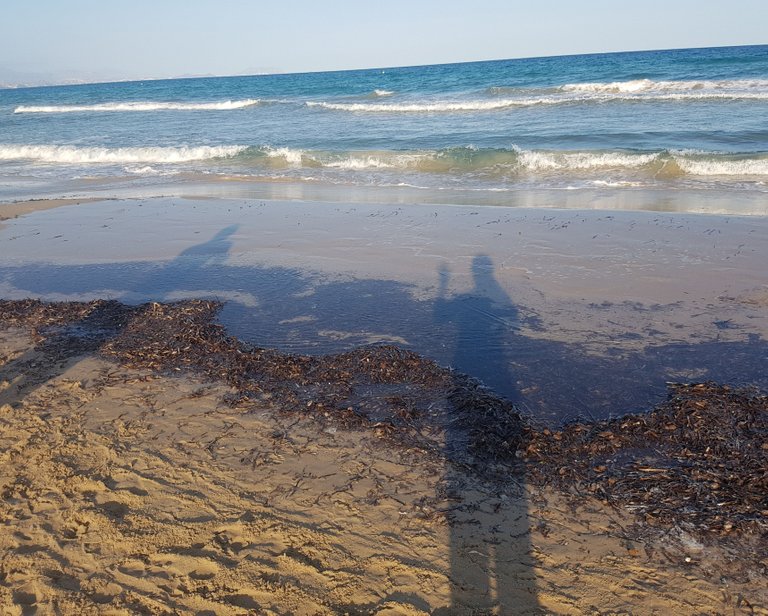Do you think you have a good level of Vitamin D3 in your body? My guess, you don’t, even when you say, you have stayed in sun all day long.

But how do I come to such a drastic conclusion, when I don’t even know you? Why isn’t it so easy to gain Vitamin D3 over your skin? How does this even work? And above all, why have more and more people been afraid of the sun over the last years?
After I explained in my first article, what Vitamin D3 exactly is, where it comes from and that it’s not just a fad of modern times, I will now clarify all the mistaken rumors, many mainstream media are reporting over and over.
Following I will tell you
- How does the human body gain Vitamin D3
- When will your level be filled up and when not
- Why you shouldn’t be afraid of the sun anymore
- Why you will not accomplish a high level through eating normal food
I am pretty sure, you already know some of the following information. But some maybe not. And this is, why I made this series. As you will see in my third article, Vitamin D3 is such an easy and cheap way to prevent health, that you will be surprised, that you haven’t heard or read about its full complexity before.
All information I present to you, come from books or online articles written by known international and national experts in this field. You will find all sources at the bottom of this article.
How exactly does our skin produce Vitamin D3 in sunshine?
Man is dependent on the sun.
The precursor of Vitamin D is formed in the skin from the basic substance of all steroid hormones, cholesterol. The UV-B rays of the sun break open a special ring of this molecule. The hormonally active form of Vitamin D3 develops later. Biochemical activation in the liver and kidney takes place in two steps afterwards. These finely regulated activation steps also prevent the harmfulness of Vitamin D3, even if it is supplied in large quantities. In the selling form of Vitamin D3, this substance is biochemically inactive.

Disturbing factors
Does this mechanism also work when the sun shines through the window, when the sky is cloudy or when sunscreen is applied?
Short answer: No
Detailed answer: All these obstacles completely block the natural process of Vitamin D3 synthesis. Only the unimpeded UV-B light can effect Vitamin D3 synthesis in the skin. Unfortunately, the necessary UV-B light only occurs practically at noon, when the sky is "blue" and the radiation falls unfiltered onto the skin. The time in the morning and afternoon, as well as shady places in the noon time offer only scattered UV-A light, which contributes nothing to the Vitamin D3 production. The important UV-B light is not reflected due to its physical properties.
Conclusion:
Everything, that is pushed between the "blue sky and bare skin" prevents Vitamin D3:
Clouds, shadows, window glass, clothes, sunscreen.
Sun creams lead to skin cancer
Although sunscreens protect against sunburn to a certain extent, they do not provide sufficient protection against the dangerous UV rays. On the one hand, they block only some of the UV-B rays, and on the other, the conventional products do not protect against the UV-A rays, which also cause cancer and penetrate deeper into the skin.
In the meantime, more and more sun creams are coming onto the market, which also offer a certain UV-A protection. So far, however, there are no standard values for an optimal UV-A filter, so that this protection is not at all meaningful for many products. This is because the products usually do not indicate how high and effective the UV-A protection really is. The level of the light protection factor (SPF) refers exclusively to protection against UV-B rays. But according to many studies, UV-A radiation is much more dangerous and poses a greater risk of skin cancer than UV-B radiation, which is responsible for sunburn. Since mass marketing of sunscreen products, the skin cancer rate has even increased!
Another problem is that sunscreen products reduce the Vitamin D3 content in our bodies by blocking UV-B rays. Vitamin D3 deficiency is harmful in the long run and is even blamed for some cancers. The risk of damaging the genome in the cells and developing skin cancer is at least as high during long periods of sunshine when sunscreens are used. Many people think they can stay in the sun for a particularly long time if they apply cream regularly. The sunscreen then prevents the annoying sunburn and provides a false sense of security.
Other factors why Vitamin D3 is not produced
 Sun is lower than 45°
Sun is lower than 45°The position of the sun
If the sun is lower than 45° in the sky, the UV-B rays required for the production of Vitamin D3 cannot penetrate to us. The journey through the ozone layer of our planet is too long. North of the 52nd latitude it is therefore not possible at all to produce Vitamin D3 via the skin in the winter months from October to March, as the sun does not exceed this angle here.
But there is a quick and simple trick to identify whether Vitamin D3 can be produced over your skin or not. As I said, the sun must stand higher than 45°. This means:
If your shadow is shorter than your body you are able to gain Vitamin D3.
Showering after sunbathing
Who does not know it, after a long day in the sun, a shower in the evening is exactly the right thing to do. But is it? A case study:
Tom is on summer vacation in Italy. He has already heard that sunscreen prevents the production of Vitamin D3 and therefore he does not cream himself. The sun was shining in the sky most of the day and since Tom wanted to do something good for his health, he exposed himself to it again and again without clothes. But Tom was also careful and didn't overdo it of course and was able to avoid a sunburn.
After a long and strenuous day of sightseeing, Tom wants to swim in the pool in the evening and take a relaxing shower before dropping into bed.
And what about his Vitamin D3 levels?
It takes the skin up to 48 hours to actually absorb the provitamin D formed in the outer skin areas during sunbathing and conduct it into the bloodstream.
Therefore, at least 4 to 6 hours should pass between sunbathing and showering - at least without soap. Otherwise the newly formed provitamin might flow away through the spout.
A study from 2007 gives an indication of the connection between showers and Vitamin D3 levels.
The study, published in the June issue of the Journal of Clinical Endocrinology And Metabolism, examined Hawaiian surfers and found that they had low Vitamin D3 levels despite very frequent exposure to the sun (almost 30 hours of sunlight per week on average).
One might think that the sports freaks probably use sun blockers regularly, but 40% of the study participants confirmed that this is not the case and that they never or very rarely used sun creams.
At the same time, it had been shown that lifeguards who only come into contact with water in emergencies, i.e. rarely during the day, had significantly higher Vitamin D3 levels than the surfers.
So, back to Tom. He decided not to swim in the pool and just lay down for a few hours instead before taking a short shower without soap and much rubbing. This way, his body was better able to absorb some of the provitamin D.
 Light skin produces faster
Light skin produces fasterSkin color and Vitamin D3 production
The lighter your skin color, the faster you can produce Vitamin D3. The darker your skin type, the longer it takes for you to produce the same amount of Vitamin D3 as a light-skinned person.
Your skin type depends on where your ancestors lived and how much sunlight they have been exposed to over generations. In the north, people have lighter skin so that they could produce sufficient Vitamin D3 as quickly as possible with the rarely available sun.
However, as we approach the equator, the more often and intensively the sun shines, so that the skin has to protect itself from too much radiation, while the formation of Vitamin D3 was never a problem.
The problem now arises when a dark-skinned person lives in the north. In this case the dark skin color reduces the formation of Vitamin D3 and an even longer stay in the sun is necessary to be able to produce enough Vitamin D3.
 Don't be afraid of the sun
Don't be afraid of the sunSunlight protects against skin cancer
Vitamin D3 is responsible for numerous metabolic processes within the body. It also leads to the transport of the pigments. If the organism lacks cholecalciferol (Vitamin D), melanin residues remain in the uppermost skin layer. The cells enclose the pigment by thickening the epidermis. As a result, those affected see it as brownish spots on the skin.
Vitamin D3 is an important component in the prevention of age spots. For example, calcium promotes the regeneration of skin cells and ensures the skin's resistance.
Melanin acts as a barrier to the ultraviolet rays of the sun. This means that it prevents their penetration into deeper skin layers and prevents cancer.
A lack of Vitamin D3 weakens the upper skin layer. UV rays penetrate the skin through dead cells and damage it. Cholecalciferol supports cell division as well as cell differentiation. Every minute, 40,000 skin cells renew themselves. The process is directly dependent on the body's own Vitamin D3 level. If there is an insufficient supply, there is a risk of a permeable skin barrier.
If you have a good level of Vitamin D3, you benefit from reliable skin protection. For example, the vital substance has an antibacterial effect. Cholecalciferol also protects the uppermost layer of the skin from damage caused by excessive sun exposure. Strong sun exposure and free radicals lead to premature skin aging. Skin cells die and in the worst case, genetic defects occur. They provide the basis for skin cancer.

Vitamin D3 in food
First of all, most foods do not contain Vitamin D3 or only traces of it. Even sea fish contributes little to the supply of it. Therefore an intake through food is very unlikely.
Only a few wild fish species, such as herring, salmon or eel, are rich in Vitamin D3 under certain circumstances. Fish cannot produce this hormone per se. The Vitamin D3 enriched in fish comes from specialized plankton species. This plankton reaches our latitudes through ocean currents or migrations of fish. Thus only saltwater fish have a high content of Vitamin D3 as long as they do not come from aqua farms. However, when the fish is heated, e.g. during grilling and roasting, Vitamin D3 is destroyed. This means that roasted fish cannot produce a sufficient level; and wild raw fish carries the risk of nematodes and other parasites.
The Vitamin D3 content in milk, eggs or meat depends on the condition of the animals. If they are much outside, they are more likely to have a good level (but remember the position of the sun again), if they are kept in the barn, artificial Vitamin D3 would have to be added by the food.
But here too, at high temperatures, as is the case with roasting, Vitamin D3 is lost by about 50 to 95%.
Avocados could also be a good source, but the daily needs will not be covered with them.
Cod liver oil
In the past, children were given cod-liver oil as protection against rickets in order to prevent bone deformations. However, higher amounts of cod liver oil (which would be required) are extremely harmful to the body. Cod Liver Oil has a high content of Vitamin D3, but also a high Vitamin A content. The amount needed for a sufficient supply of Vitamin D3 would lead to Vitamin A poisoning. (An overdose of Vitamin A can cause high blood pressure or kidney failure.)

As you can see, it is not so easy to produce enough Vitamin D3 through the skin or through food. Various disturbing factors ensure that our body is unable to initiate the processes required to produce Vitamin D3 in the first place.
The position of the sun, sun cream on the skin, the color of the skin and showering in the evening are all factors to consider when it comes to an autonomous production in the body.
Especially the fear of the sun must be named, which is fueled more year over year.
We have seen how important it and its positive effects actually are for our health. All of us know that it cannot be healthy to lie in the full sun all day long, whether with or without sunscreen. I don't want to demonize sunscreen per se. It can offer protection at certain times. But perhaps with this second part I could encourage people to reach for a cloth or another piece of fabric from time to time to protect themselves from the sun. In any case, this could easily be changed and put down in a controlled manner. Another idea could be to put on sun cream only after the first 30 minutes of sun bathing.
In the third and last part of my series about Vitamin D3 I will talk about what an optimal Vitamin D3 level looks like, how to achieve it in an easy way and what has to be considered.
How do you feel about these topics? Have you had any experience with Vitamin D3? Can you tell us something from experience about the connection between Vitamin D3 and various diseases? Have you experienced something positive or maybe even negative?
If you think some information is not correct at all, please add a source to prove your statement.
I love to exchange knowledge with you!
I look forward to your feedback!
Lots of love
Anna
http://www.vitamindelta.de/home/vitamin-d-ursache-vieler-symptome.html [Status: 2018/04/16]
https://www.helles-koepfchen.de/wissen/sommer-sonne-sonnenbrand-schutz-vor-uv-strahlung.html [Status: 2018/04/25]
https://www.zentrum-der-gesundheit.de/vitamin-d-bildung-stoerung-ia.html [Status: 2018/05/02]
https://www.zentrum-der-gesundheit.de/sonnenbaden-ist-gesund-ia.html [Status: 2018/04/25]
https://onlinelibrary.wiley.com/doi/full/10.1111/joim.12496 [Status: 2018/04/25]
https://www.vitamindmangel.net/vitamin-d-bei-altersflecken.html [Status: 2018/04/25]
https://www.gesundheit.de/ernaehrung/naehrstoffe/vitamine/vitamin-a-retinol [Status: 2018/05/01]
Want to see more from me?
Follow me on
Instagram
zappl.com
Vitamin D3 - Part I is here
Read my Introduceyourself to get to know me better :)